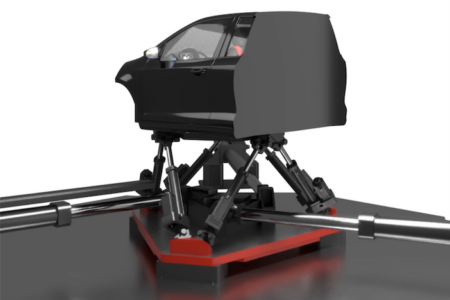Open architecture driving simulator specialist, Cruden, has developed a new motorcycle simulator, the B306-HMD. To replicate motorcycle riding with authenticity, the simulator incorporates a 6-DOF motion system in hexapod configuration, depth-map sensors for rider body tracking, an extra-stiff steering actuator and a head-mounted display (HMD) for visualization.
Cruden CEO, Maarten van Donselaar, stated, “In developing the simulator, it has been necessary to create more complex hardware and software than that needed for a car simulator. We have had to address riders’ force-related bike control inputs as opposed to drivers’ steering angle inputs, as well as develop mechanisms that manage counter-steering, body-shift and widely varying riding styles and the requirement for a very large field of view, both horizontally and vertically.
“Our system with depth-map sensors continuously detects exactly how the rider is positioned on the bike and uses this information to alter vehicle behavior accordingly. To complement this, a very stiff steering actuator allows for realistic counter-steering capabilities. We also decided to equip our B306-HMD simulator with a head-mounted display (HMD), to offer a virtually unlimited field of view. An unprecedented level of immersion is aided by highly accurate graphics and a perfect integration of the HMD into Cruden’s Panthera simulation software. This integration sees the HMD respond to the riders’s head movements, not to those of the motion platform.”
The simulator is intended to be of considerable value to scientists researching how to make motorcycling safer on public roads, which requires a better understanding of variances in individual rider technique and the interaction of the rider with the environment. Cruden expects its simulator will also be used in high-level rider training, racing simulations and fine-tuning vehicle dynamics.




